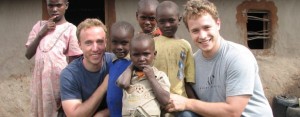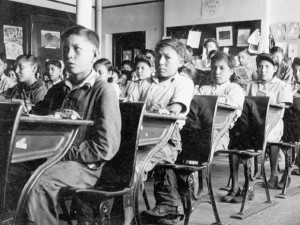Hello readers!
It is finally our last ASTU blog! Looking back on the year our prominent focus was on trauma and memory. We read countless of graphic novels, scholarly articles, and novels that depicted the on trauma and memory, which investigated the social, personal, cultural, and political factors that traumatic events can have on people and society. First we read Persepolis where Marjane conveyed her ongoing struggle in the Iranian revolution. Next, in Safe Area Gorazde we discussed hoe an American journalist (an outsider) focused on impacts of the Bosnian War. In Obasan we observed Naomi’s devastating past that caused her to alter her perspective as an adult. This term we read many pieces of work where the underlying effect was to emphasis on the tragedies of War on Terror. In Redeployment we read bout how a veteran’s from the war suffered from PTSD and how he could never have the same life and be able to continue is daily life from before the war. In the last two novels we read, Extremely Loud and Incredibly Closer and The Reluctant Fundamentalist both characters were affected by 9/11 because they were suffering from the trauma. While focusing on trauma all year it is evident how miserable and dejected it can affect people. However, through these intense and bold stories about trauma it gives readers something amazing to read and keep in their hearts forever. Not only can “trauma narratives” provide comfort for authors, but they can also give readers a deeper understanding of the human experiences behind the facts and dates of traumatic world events. Through the terms the trauma framework varied but to the different scholars we fixated on. Most of the characters trauma resulted from the fear and vulnerability that was transformed in their minds. This fear was most of the time a result of the creation of some sort of social divide.
Reflecting back on all the novels throughout the year these traumas were based on countless social oppositions while also being unified through the emotions the characters felt. However, no matter where a person is in the world, or their race, or age every human has been brought up to have the same emotions. With these emotions shown it allowed our class to highlight on the meaningful viewpoints of all the texts and feel somewhat connected to the characters. With all the recent current events in the world today many individuals struggle with these difficult issues. Yet these issues allow people to be connected all around the world even though it is not a positive aspect. This is why through literature or any medium people are able to voice their emotions. These creates a community where people can have a sense of comfort reading literature so they can understand how other people are going through the same obstacles as they are. Trauma is something that will never be easy to cope with but from the self-expression from authors all around the world it allows these powerful experiences to be voiced. Finally, “Trauma narratives” connect individuals, which is such an amazing coping mechanism for people all around the globe and will hopefully always be there for generations to come.
It has truly been an amazing year in ASTU and I hope you all enjoyed reading my blog!
-Imaan




